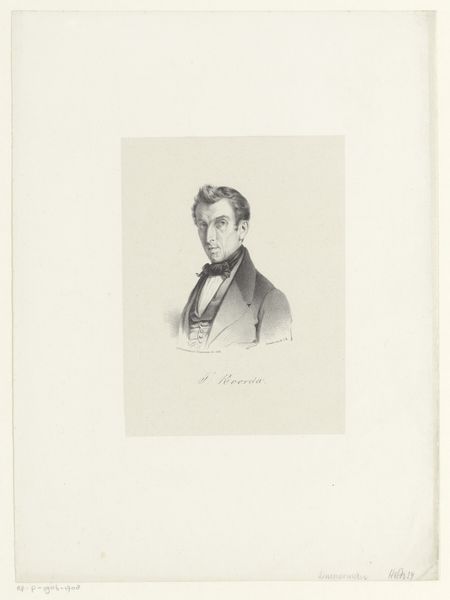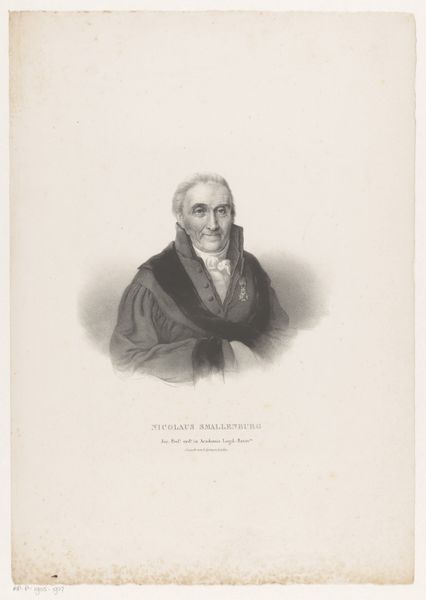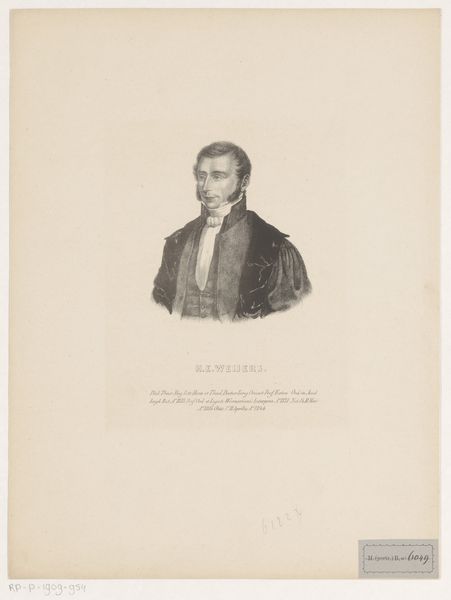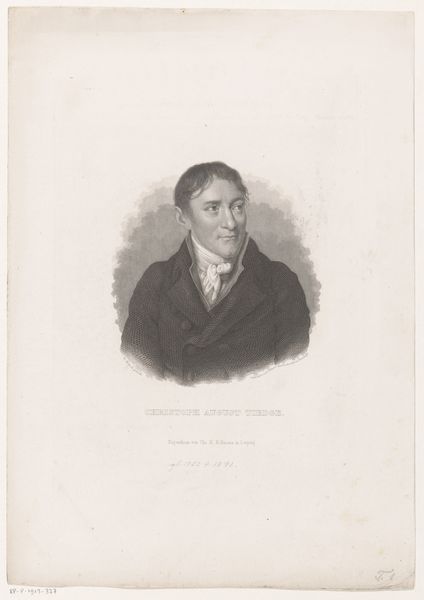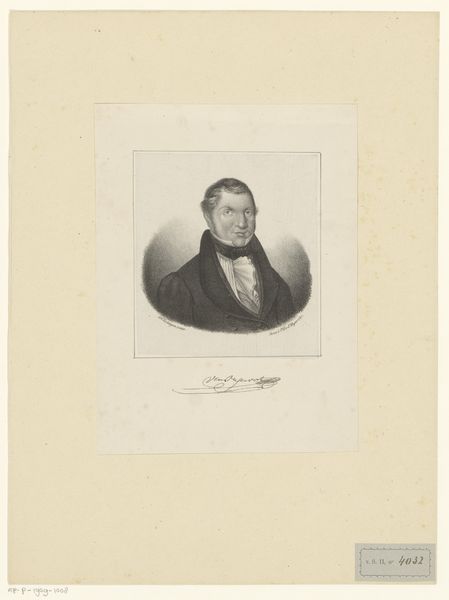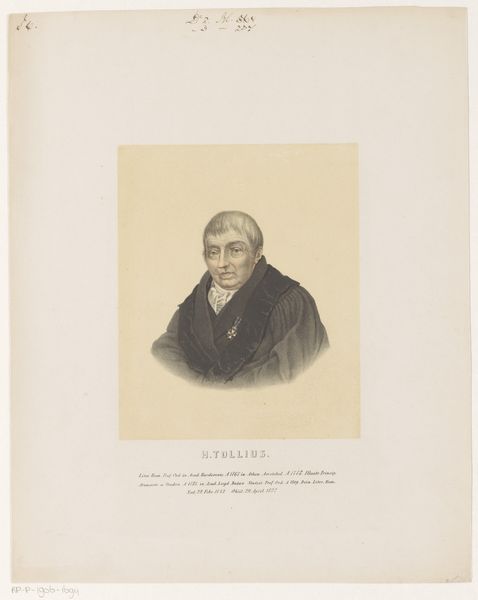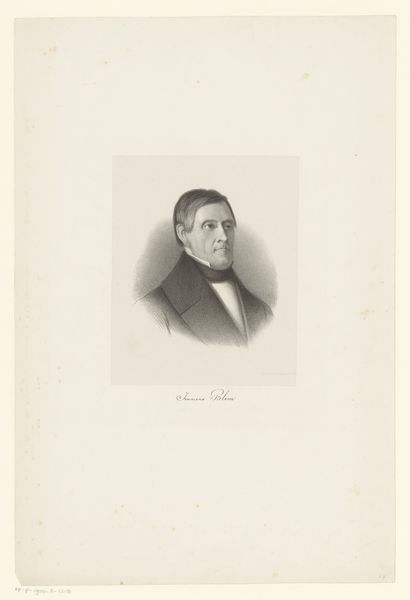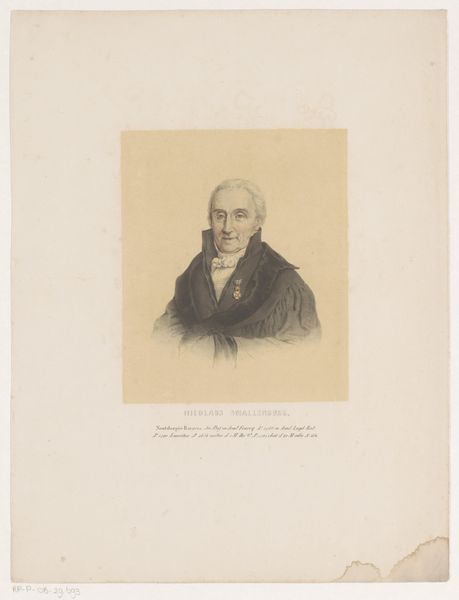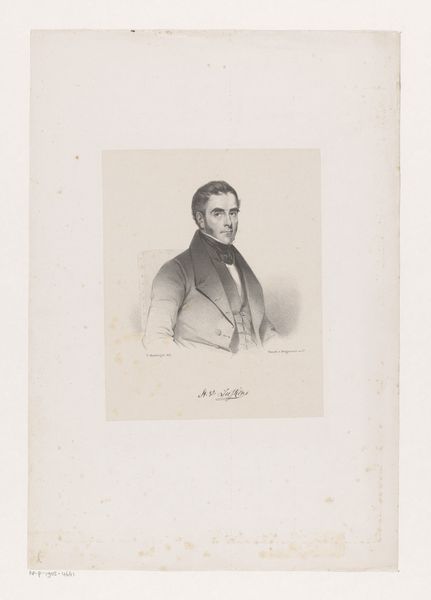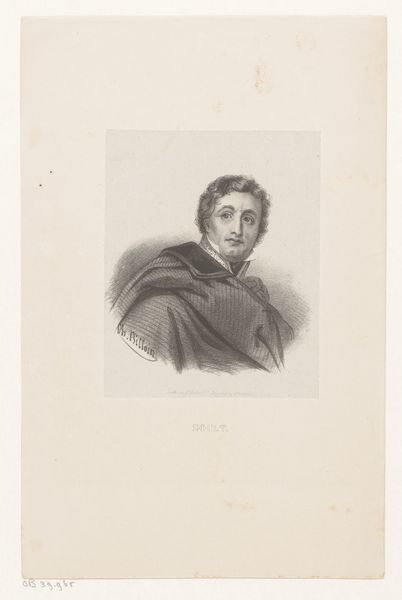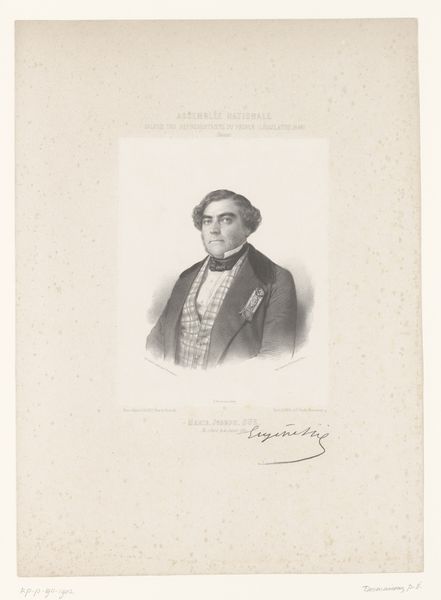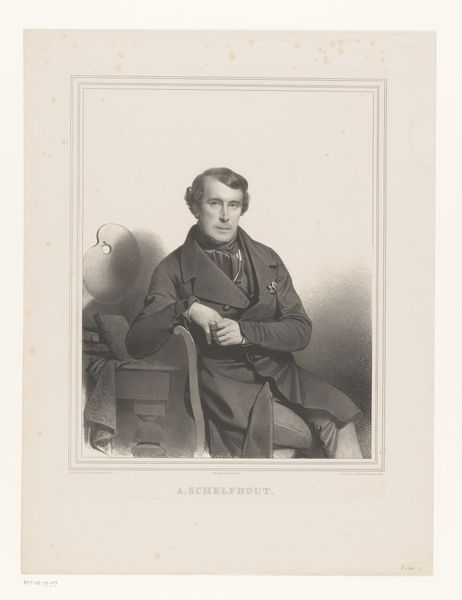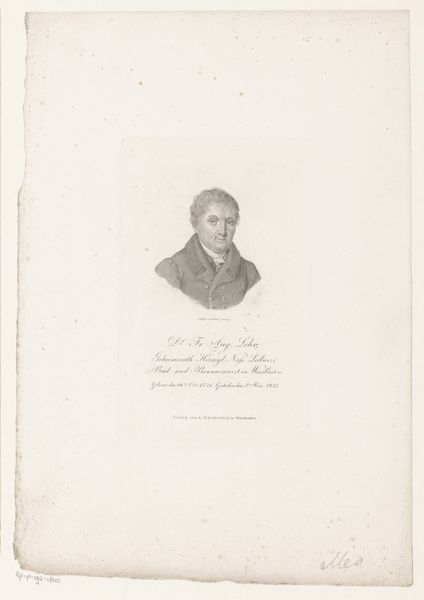
drawing, pencil
#
portrait
#
pencil drawn
#
drawing
#
pencil drawing
#
pencil
#
history-painting
#
academic-art
#
realism
Dimensions: height 347 mm, width 258 mm
Copyright: Rijks Museum: Open Domain
Curator: This is Leendert Springer's "Portret van Gerard Sandifort," created around 1850. It’s a pencil drawing, showcasing the academic realism popular at the time. What are your initial impressions? Editor: Striking. There's a certain austerity in the stark contrasts, a somber mood emanating from the muted palette. It's fascinating how much depth he achieves with just pencil strokes. Curator: Absolutely. Considering Sandifort was a professor of anatomy and surgery, one wonders about the implications of this portrait. Academic circles, even medical ones, were not free from the same restrictive social codes for whom had the power to be documented visually. Who was seen and how... Editor: A valid point. And Springer really captures the formality of the era through meticulous detail. Look at the layering of his garments. The velvet collar suggests wealth and status while drawing focus to the sharp contour of the sitter’s face. It invites decoding of character through physiognomy. Curator: The historical context deepens the work. The subject, Gerard Sandifort, occupied a privileged position as the Leiden University's professor and as son of the chair’s prior occupant. It brings into consideration questions about institutional power structures within academic and scientific elites of the time. A man literally cloaked by access. Editor: Indeed. And even beyond, Springer's skillful rendering, utilizing a play of light and shadow that provides the piece an inner liveliness beyond a flat record, lends an engaging presence. I note particularly, too, that the light, glancing from the side, enhances depth and invites investigation. Curator: It asks who are deemed worthy to be made iconic and elevated to visibility via portraiture? In doing so, it unveils the implicit biases that shaped historical narratives. I am most curious about this representation within the narratives of art as document, and its reproduction within academic circles. Editor: It all seems, after our discussion, less cold, much more nuanced, despite the graphic medium. Curator: I agree. Considering the socio-political circumstances behind art's visibility, or invisibility, provides this "Portret van Gerard Sandifort" another depth altogether.
Comments
No comments
Be the first to comment and join the conversation on the ultimate creative platform.

